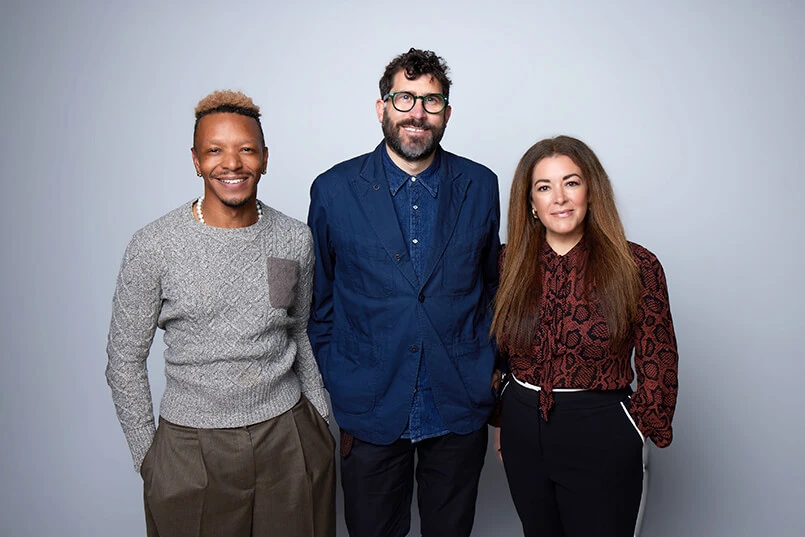Thank goodness for Madhav Nayak.
For those of you who don’t know him, Madhav Nayak is the APAC marketing director at Unilever.
Actually, I don’t know him myself – not personally. But I did enjoy the recent pleasure of listening to him speak at the Marketing Magazine Digital Performance Marketing Conference in Singapore.
Madhav was last up on the day – he delivered the closing keynote speech, entitled ‘Traps in a digital world – and how marketers can avoid them’.
Lots of insight, lots of topics, but mostly wrong attitudes.
It had been a long day. Filled, I hasten to add, with intelligent speakers from all over Asia, from agency, technology supplier and client side. It wasn’t as if I learned nothing, or gained nothing of value. But I was, I confess, frustrated.
All the expected topics were covered, either fleetingly or in more depth. Things like the importance of achieving a single customer profile using cross-device tracking. The required focus on data quality and insight outputs over quantity. The use of acquisition based metrics to measure success, and the use of attribution (or not) to help get there.
Ad-fraud, bot-net fraud, supplier transparency. The changing customer journey in a digital world. Legacy issues and skill set shortages in marketing departments and agencies, preventing the occurrence of real progress.
Data stacking, data management, mobile moments and data fusion. The use of programmatic buying for brand-building. Digital test, learn, evolve models. AV testing, dynamic creative, the importance of short-form content. The role of the agency, and agency versus in-house management.
What was missing?
The content didn’t lack insight, it was full of intelligence. And yet no-one – not one single person – fully came out of the digital silo.
No-one talked about the importance of using digital and analogue channels together – particularly in context of performance media (DRTV, let’s not forget, is also performance media that benefits from data and modelling). No-one discussed the challenges inherent in trying to create a completely channel agnostic campaign.
No-one talked about how we need to re-structure ourselves not just in terms of organisation-level co-operation with data and IT teams, but in terms of how marketing needs to re-structure its own teams along more cohesive lines (something we often discuss with our clients when they ask for consultancy help in structuring their own departments, or their own roster of suppliers).
There were a number of comments that I can gather under the phrase ‘making digital no longer an orphan’ – a verbatim from one speaker, which could have been about breaking down silos but to my ears was positioned more as putting more resource into digital departments and making them more important, and more budget-worthy.
And there was a fair amount of chest beating about how digital outperforms traditional channels from a measurement and accuracy perspective. This, mainly, was where ‘mass media’ channels were referenced – as an old-fashioned approach, as something in decline and being replaced.
And I thought, how is it that we’re still thinking this way in 2016?
Digital Xanadu
What is digital Xanadu?
Is it a world where the advertising mediums of television, press, radio et al have been crushed to death, leaving a gloriously pure new world?
Surely it isn’t. But it often feels, at these kind of conferences, that this kind of vision is what many have in mind. Even in 2016, the evolution of digital advertising is framed as a contest, a struggle, a war against the ‘traditional’ naysayers and the ignoramuses that persist in outdated modes of communication.
Invariably, there is some specialisation associated with digital media and data, with digital agencies or suppliers. But does everything have to remain in a siloed ‘digital department’, with this inherent sense of competition for budget, for recognition, for supremacy over the ‘traditional’?
Never mind that there’s as much evidence to show the positive effects of, for example, television advertising on brand saliency and sales as there is anything else.
Forget the fact that numerous studies demonstrate the positive correlation between digital and analogue channel marketing working together. Disregard the fact that ‘digital’ is now threaded through elements of pretty much all aspects of business and marketing, and is therefore much more nebulous.
Let’s all just keep the chip on the shoulder in the race to digital Xanadu.
The Seven Traps
Anyway, back to the conference. I was, as you can probably picture, sitting on my seat, rocking slightly and having worked myself up into a small and frothy internal lather, when up stepped Madhav, with his seven traps for digital marketers. I can’t replicate his speech verbatim, but the traps are so simple and strong that I’ve attempted to repeat them all here.
1. The ‘Leap before you Look’ trap.
In other words, jumping ahead without proper campaign objectives in pursuit of an unexplained goal. ‘Getting Likes’ or ‘Going Viral’ were two examples.
The marketer needs to separate these outputs from the actual outcomes, focus away from ‘digital’ as the lead driver, and work on understanding what the outcomes should be before taking the leap.
2. The ‘New Toy’ trap.
Don’t jump on a new-fad bandwagon because of the wrong reasons, particularly the fear of missing out. Don’t focus on what it does – focus on what it could do for you.
3. The ‘Fake it till you Make It’ trap.
Storytelling can play a big role in marketing, but when it becomes overblown, it’s useless. Be genuine, as a brand.
4. The ‘Pretending to Listen’ trap.
According to research, 89% of social media messages from consumers are ignored by brands. A consumer expects anything from 0 to 4 hours response time from a brand to his or her post; brands generally respond in 10 hours.
Consumers are therefore cynical about how much brands actually listen. The question to ask: are you socially listening, or are you just socially hearing?
5. The ‘Can I have more Data’ trap.
The answer to the question is always yes (5 Billion Gigs developed every 2 minutes). But do we really want or need it? Too much data can get in the way of performance or instinctive decision making.
6. The ‘Overnight Digital Expert’ trap.
In other words, beware of the agency who says it has all the answers, or who changes its proposition with the digital tide. With over 3 million results for a google search against ‘leading digital expert’, we are not exactly starved of claims in this space.
And the seventh trap, where it appeared that my mind had been read.
7. The ‘Advertising is Dead’ trap.
It’s not, despite the articles, and the huge scale of the ‘non-digital’ ecosystem shows it.
Madhav cautions against over-use of what he calls a ‘versus’ mindset, which states that when something new comes along, we must by default replace something old with it (i.e. digital marketing replacing traditional marketing).
Why can’t there be an ‘and’ mindset, for different channels to work together?
He points out that traditional advertising isn’t dead, as the headlines suggest – but irrelevant advertising intrusion, in whatever format (television, print or social content) may well be.
So, the channel is not necessarily the problem, it’s the communication. Do we have something to say, and can we be meaningful about it? If the answer is yes – then the best channels to tell the story in are the best channels, whether or not they are ‘traditional’ or ‘new’.
Enlightenment, or common sense?
I know that there are other people in our industry that adhere to this kind of thinking, that don’t simply eschew some forms of communication, or proclaim the ‘death’ of something because it isn’t considered fashionable or forward-thinking. Maybe it’s all the headlines affecting me but sometimes, it feels like this approach is not expressed enough in debate.
So thank you, Madhav, for such a great talk and for breathing common sense into what seems to be, at times, an increasingly circular, myopic and destructive argument. I didn’t get a chance to speak to you after the session, but I certainly enjoyed it.
Madhav illustrated his talk with his own cartoons. In a small token of thanks for allowing me to use his material without permission (no doubt without doing it justice), I provide a plug here: go to Brandboozled for some amusing takes on our industry, cartoon style.
Are you struggling with the complexity that digital and data offer to business? Let TrinityP3 make sense of the new digital ecosystem for you. Details here




